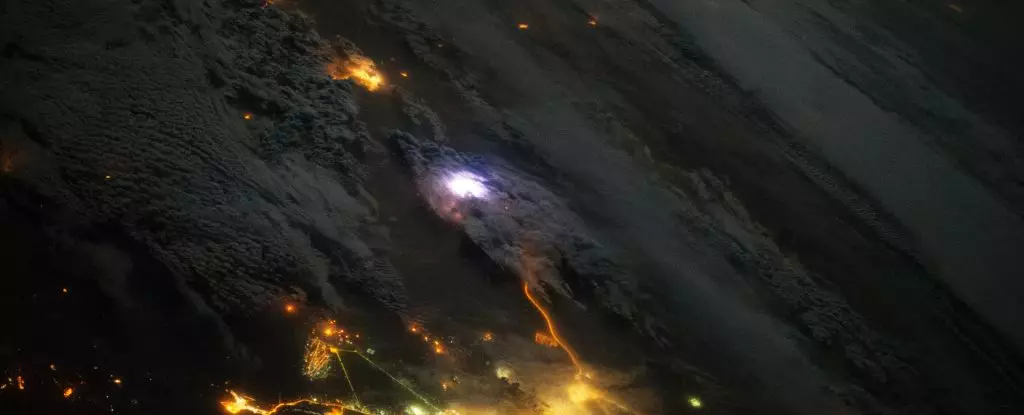Lightning storms are not only awe-inspiring spectacles that light up the night sky; they also possess an underappreciated connection to space weather. Recent studies have revealed that these powerful atmospheric events play a critical role in shaping the environment of the Van Allen radiation belts surrounding our planet. By ejecting high-energy “killer” electrons, lightning storms create a link between terrestrial meteorological phenomena and the behavior of particles in space. Understanding this relationship could be vital for the protection of both spacecraft and astronauts venturing beyond our atmosphere.
“Killer electrons” are highly energized particles that can achieve speeds close to that of light. These electrons are known to be especially problematic for satellites orbiting Earth, as they can penetrate the protective layers of metal and negatively affect electronic circuits. The energy these electrons carry poses serious risks not only for spacecraft but also for astronauts who may be exposed to harmful doses of cosmic radiation during space missions. Max Feinland, an aerospace engineer from the University of Colorado, Boulder, emphasizes the potential danger these electrons present, stating that they can be “carcinogenic if they hit a person in space.”
These electrons originate from the Earth’s magnetic field, which acts like a protective barrier, trapping charged particles emitted by the Sun. The energy contained within the two radiation belts—the inner and outer—ranges from a few hundred kilometers to tens of thousands of kilometers above the Earth’s surface. While these belts actuate a shielding effect against solar wind and cosmic radiation, events like lightning can disrupt this balance, propelling killer electrons out into the expanse of space.
Historically, researchers believed the inner radiation belt, characterized by a stable environment, remained unaffected by factors on the surface. However, Feinland’s analysis of archived satellite data revealed an unexpected correlation between lightning activity on Earth and surges of high-energy electrons within the radiation belt. Between 1996 and 2006, he documented 45 instances of anomalous high-energy electron clusters, some of which coincided with recorded lightning strikes within less than a second’s time frame.
This surprising discovery reshapes our understanding of how lightning generates electromagnetic waves, known as whistler waves. These low-frequency waves can induce a domino effect, providing energy transfer pathways between lower and higher-energy electrons. This phenomenon could serve as a critical mechanism through which lightning affects space weather, pushing the very electrons that could endanger both equipment and human health into the vastness of space.
The findings regarding lightning-induced high-energy electrons prompt a deeper exploration of the various environmental factors that contribute to this phenomenon. Existing research indicates that solar activity—such as flares and coronal mass ejections—could influence the intensity and frequency of these surges. Additionally, the density of plasma in the area and the overall wave activity present during such storms also seem to play a significant role.
Going forward, researchers face the challenge of enhancing their models to account for the multivariate influences that govern the production of killer electrons. The complexity of wave-particle interactions and the specific conditions required to trigger these dangerous surges necessitate further observational campaigns and data analyses.
Understanding the link between ground-level lightning storms and outer space electron dynamics has significant implications for the safety of astronauts and the integrity of satellite technology. As we continue to expand our presence in space, the knowledge gleaned from this research could guide future mission planning. Space agencies may need to implement precautionary measures, recommending that astronauts remain sheltered during lightning activity on Earth to mitigate their exposure to harmful cosmic radiation.
Furthermore, an enhanced understanding of killer electrons and their origins could pave the way for improved protective measures for satellites. As new technology launches into low-Earth orbit becomes increasingly common, safeguarding these assets from the impacts of lightning-induced high-energy electrons is essential for ensuring the longevity and reliability of our space infrastructure.
Lightning storms are not merely a display of nature’s fury; they serve as a reminder of the interconnectedness of Earth and the cosmos. By investigating the mechanisms through which these storms generate killer electrons, we can gain valuable insights into the implications for both our planet and beyond. As science continues to advance, the surprising link between Earth’s atmospheric phenomena and space weather will likely yield further revelations—emphasizing our continuing need to comprehend the forces that shape our existence in both realms.


Leave a Reply